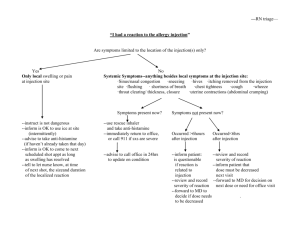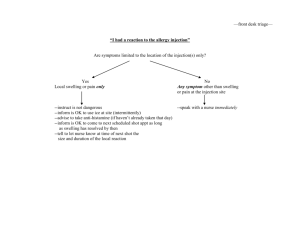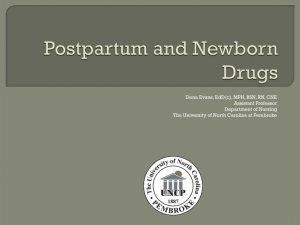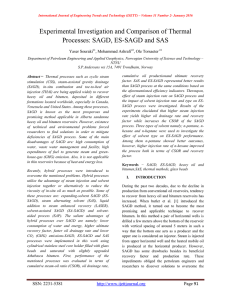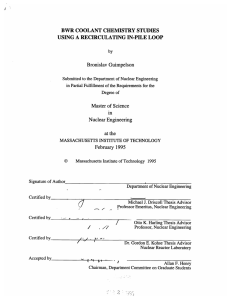Zara_Khatib_DL_presentation_Nov_23
advertisement
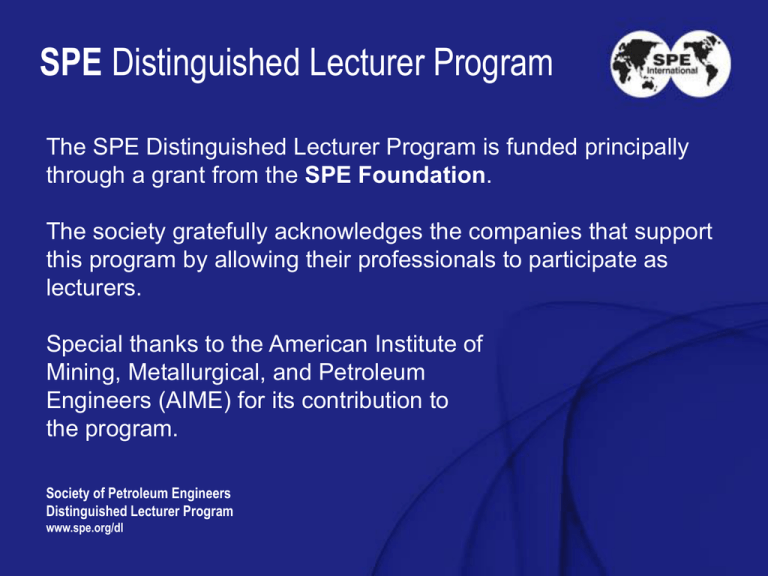
SPE Distinguished Lecturer Program The SPE Distinguished Lecturer Program is funded principally through a grant from the SPE Foundation. The society gratefully acknowledges the companies that support this program by allowing their professionals to participate as lecturers. Special thanks to the American Institute of Mining, Metallurgical, and Petroleum Engineers (AIME) for its contribution to the program. Society of Petroleum Engineers Distinguished Lecturer Program www.spe.org/dl Produced Water Management A Legacy or an Opportunity for Sustainable Field Development Dr. Zara Khatib Shell E&P International Middle East & South Asia Region Society of Petroleum Engineers Distinguished Lecturer Program www.spe.org/dl Outline Global energy and water challenges Produced water from oil fields : sources & challenges Water management practices Examples where technology enabled integrated water management Key messages & conclusions The ‘Global Energy Challenge’ Providing access to modern energy for all Meeting growing demand while reducing environmental and social impacts Shifting towards a low-carbon energy system Front-page Issues Every Day Energy diversity & security Climate change Local air pollution Water is now emerging as the next global issue Freshwater stress is increasing faster than expected ---- 2005 (WBCSD Water Scenarios to 2025, published 2006) Produced Water Sources Gas Processing water Produced Water Injection Oil Pipeline Oil Produced Water Discharge Surface Facilities Sea or River Water Injection Producing Zone Aquifer Oil Producer Well Water Injector Well Globally For Every Barrel of Oil Produced 3 Barrels of Water Are Co-produced Average Global Produced Water Volumes Increased by 20% in Last Two Years (DOE J. Vale) Average Produced Water Per Country Water Oil Ratios (Bbl/bbl) Canada USA Oman Kuwait Norway Saudi UAE 0 2 4 6 8 10 Water Oil Ratios 12 14 16 Produced Water Handling Is Costly Separation (15%) Cost ranges from $0.15-$15/bbl of water High Water Footprint With IOR/EOR Waterflood Thermal EOR Waterflood Primary Primary 5 years Primary Waterflood & Polymer 10 years 20 years Oil production split based on Recovery Processes Water Footprint in Steam Floods steam generator injection well production well heat losses steam and condensed water hot water oil bank oil and water zone Water Management Practices Minimise the volumes to Surface Maximise re-use of water by injecting into hydrocarbon producing formation Reduce footprint and cost Use beneficially all resources Safeguard open waters & aquifers Examples Where Technology Enabled Integrated Water Management Impact of Well Completion on Water Production 250 Rate, Km3/d 200 90 Horizontal wells 80 175 70 150 60 125 50 100 40 75 30 50 20 25 10 0 0 1971 1973 1975 1977 1979 1981 1983 1985 1987 1989 1991 1993 1995 1997 1999 2001 2003 2005 Water Cut ( %) 225 100 Water Rate Oil Rate Water Injection Water Cut Early Water Breakthrough in Naturally Fractured Reservoirs Sh Max Fracture aligned parallel to Sh Max, increasing conductivity Water Injection Water production Sh Max Control of Induced Fractures During Water Flood Water quality of injection water is key Pressure Control at Injectors Conventional- Pressure Control at Producers Ultimate Recovery > 15% 1.5 yrs 6 yrs 465 days 10 yrs 2201 days 3796 days 1 1 1 5 0.9 5 0.9 5 0.9 10 0.8 10 0.8 10 0.8 0.7 15 0.6 20 0.7 15 0.6 20 0.5 25 25 30 0.2 40 0.1 45 10 20 30 40 0.4 30 0.3 35 0.2 40 0.1 45 0 0.5 25 0.4 0.3 35 0.6 20 0.5 0.4 30 0.7 15 10 20 30 40 0.3 35 0.2 40 0.1 45 0 10 20 30 40 0 Optimal – Pressure Control at Injectors 463 days 2205 days 3796 days 1 5 0.9 10 0.8 0.7 15 0.6 20 1 0.9 5 0.9 10 0.8 10 0.8 0.7 15 0.6 20 0.5 25 25 40 0.1 45 10 20 30 40 0 0.5 25 30 0.2 0.6 20 0.4 0.4 30 0.3 35 0.7 15 0.5 0.4 30 1 5 0.3 35 0.2 40 0.1 45 10 20 30 40 0 0.3 35 0.2 40 0.1 45 10 20 30 40 0 Water Front Management (4D Seismic) Increased intensity of injection to southern wells Converted high water cut producers to injectors Used produced water injection instead of seawater in the North Impact of High Rate ESP’s Novel Zonal Isolation • Game-changer technology • Threefold increase of oil production • Less water production Elastomer 3.6 millimeter Elastomer 8.1millimeter (118% increase) Increase in Oil Production by Water Shut-off at the Source Small Foot Print and Lower Impact on Environment (Modular, Compact, Fit for Purpose Facilities) Offshore Assets Land Assets Deepwater Sub-sea Maximise Resource Utilisation Other fibre crops Converting waste water to value Ultra Clean Fuels From Natural Gas with Good Water & Energy Value Opportunity Shell Middle Distillate Synthesis (SMDS) in Malaysia Gas intake: 12,500 t/d, Fuel production: 9500 t/d • process water production- 13,000 t/d • excess heat - 2-3 gigawatt energy in steam • Waste heat can be used to treat water to make it suitable for irrigation or drinking water - 1 mw => 240 m3/d By Design: All By-products are valuable Natural Gas CH 4 Gas Treatment +O2 Syngas Manufacturing Manufacturing CO + 2H 2 Fischer Tropsch Synthesis - CH 2 - Hydrocracking - Sulphur Water (480 t/day) (~1400 m3/hr) Deep Treating Sell R&D Concrete & asphalt Plant cooling System Re-use in process Once-through sea water No waste water discharge to sea cooling not required Extracting Energy From Hot Rocks Pilot in El-Salvador • Steam produced from fractured hot rock drives turbine • Enough electricity generated to supply 9000 homes Benefits Reduced greenhouse gas emissions Carbon credits under Clean Development Mechanism A clean, renewable and indigenous resource Induced fractures Reed Beds to Biofuels 4500m3/day of produced water not injected deep wells is equivalent to about : • 100 Million Cubic Feet/year Gas savings and • 5 KT/y CO2 less emission Key Messages & Conclusions Produced Water is 3 times the oil production and has been increasing at about 10% per year Water management practices are an integral part of effective well and reservoir management Technology enables integrated water management but the challenge is in the implementation Key Messages & Conclusions Produced water is a valuable resource particularly in an increasingly constrained fresh water world Turning Produced Water from a “Legacy” to an “Opportunity” has been demonstrated Integrated Water Management is good business for sustainable field development “We are all guardians of the future. What we do today will impact on the world that the next generations will inherit” Innovation Thank You Q&A



